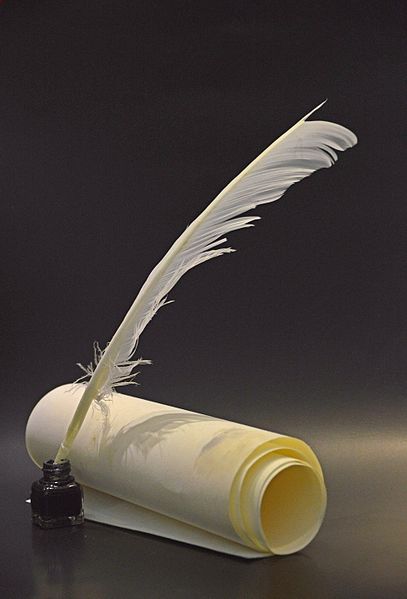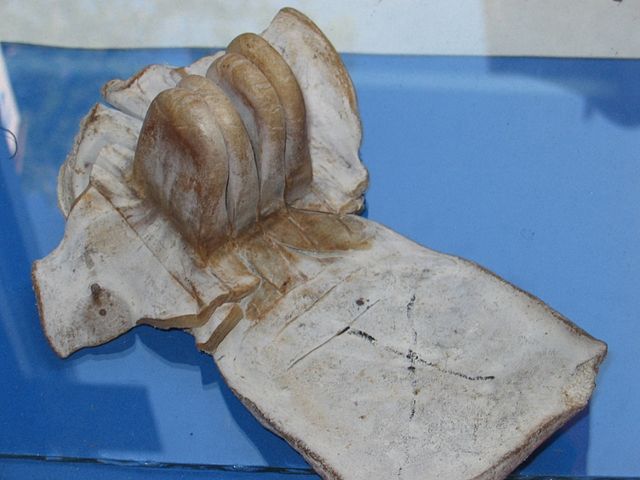Ktav Stam is the specific Jewish traditional writing with which holy scrolls, tefillin and mezuzot are written. Stam is a Hebrew acronym denoting these writings, as indicated by the gershayim punctuation mark. One who writes such articles is called a sofer stam. The writing is done by means of a feather and ink onto special parchment called klaf. There exist two primary traditions in respect to the formation of the letters, Ktav HaAshkenazi and Ktav HaSefardi, however the differences between them are slight.
A Parchment, quill, and an ink used for Ktav Stam
Ktav Stam
A sample of the Ashuri alphabet (כְּתָב אַשּׁוּרִי, ktav ashurí written, with tagin according to the Ashkenaz scribal custom on parchment (קָלַף klaf)
Tefillin, or phylacteries, are a set of small black leather boxes with leather straps containing scrolls of parchment inscribed with verses from the Torah. Tefillin are worn by adult Jews during weekday and Sunday morning prayers. In Orthodox and traditional communities, they are worn solely by men, while some Reform and Conservative (Masorti) communities allow them to be worn by any gender. In Jewish law (halacha), women are exempt from most time-dependent positive commandments, which include tefillin.
A set of tefillin includes the arm-tefillah (left) and the head-tefillah
Man wearing arm- and head-tefillin
Ashkenazi head tefillin, Jerusalem, Israel
Leather moulded into shape for the head-tefillin







